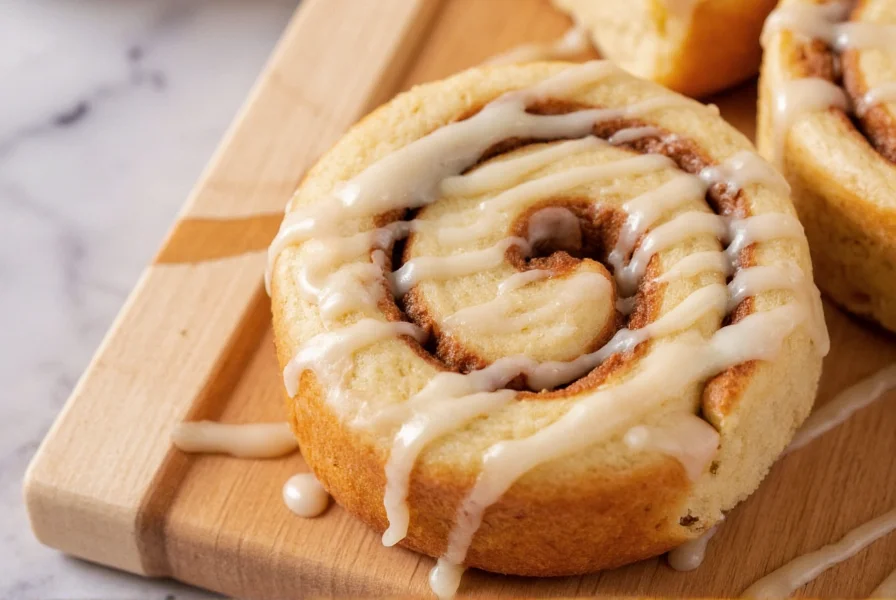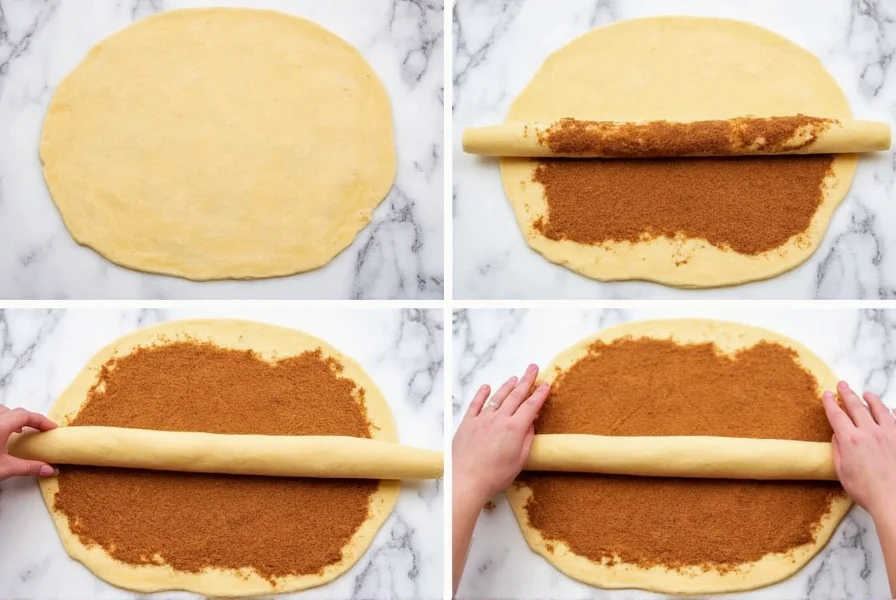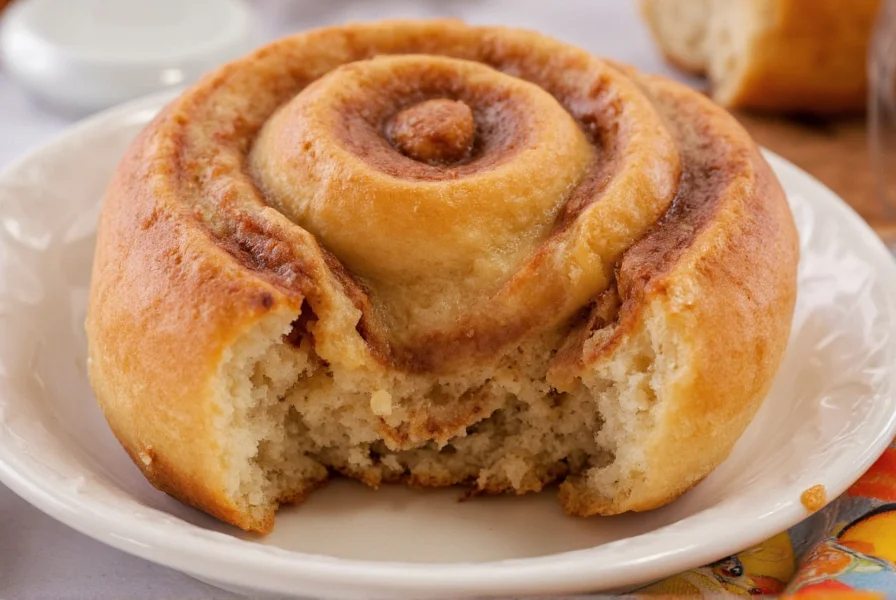Cinnamon rolls represent one of the most universally adored baked goods, combining the perfect balance of sweet and spice in a soft, pillowy package. Understanding what makes an exceptional cinnamon roll goes beyond simply mixing ingredients—it involves appreciating the science of yeast dough, the chemistry of spice combinations, and the art of proper baking technique.
The Rich History of Cinnamon Rolls
While many Americans consider cinnamon rolls a classic bakery item, their origins trace back to Sweden in the early 20th century. Known as 'kanelbulle' in Swedish, these pastries became popular during Sweden's coffee break tradition called 'fika.' The traditional Swedish version features a cardamom-infused dough alongside the cinnamon filling, creating a distinctive flavor profile that differs from American interpretations.
Immigrants brought variations of this recipe to North America, where it evolved into the sweeter, icing-laden version most recognize today. By the mid-20th century, cinnamon rolls had become a staple in American bakeries and households, with regional variations emerging across the United States and Canada.

Essential Ingredients for Perfect Cinnamon Rolls
The magic of exceptional cinnamon rolls lies in the quality and balance of ingredients. While recipes vary, certain components remain essential for achieving that signature texture and flavor:
| Ingredient | Function | Professional Tip |
|---|---|---|
| High-quality yeast | Creates the light, airy texture | Use fresh yeast and test activation in warm liquid before incorporating |
| Unsalted butter | Adds richness and flavor | Room temperature for even distribution in dough and filling |
| Ceylon cinnamon | Provides warm spice flavor | Superior to cassia with more complex flavor and less bitterness |
| Bread flour | Creates ideal gluten structure | Higher protein content yields better texture than all-purpose flour |
Traditional vs. Modern Cinnamon Roll Variations
Cinnamon roll recipes have diversified significantly from their Swedish origins. Understanding these variations helps bakers select the style that best matches their preferences:
- Swedish Kanelbulle: Features cardamom in the dough, less sweet filling, and pearl sugar topping instead of icing
- Classic American: Richer dough, generous cinnamon-sugar-butter filling, and cream cheese or vanilla icing
- Rolls with creative fillings: Modern interpretations include additions like chopped nuts, raisins, apple slices, or even savory elements
- Gluten-free versions: Using alternative flours while maintaining the characteristic texture
- Vegan adaptations: Substituting plant-based ingredients without sacrificing flavor
Professional Baking Techniques for Exceptional Results
Mastering cinnamon rolls requires attention to specific techniques that transform good pastries into extraordinary ones. These evidence-based methods address common challenges home bakers face:
Temperature control proves crucial throughout the process. The ideal dough temperature after mixing should be between 75-78°F (24-26°C). This range optimizes yeast activity while preventing over-fermentation. When rolling the dough, maintaining a cool kitchen environment (below 72°F/22°C) prevents the butter from melting out of the layers.
Proofing represents another critical stage where most home bakers encounter issues. The optimal proofing environment maintains 80-85°F (27-29°C) with 75-80% humidity. Under-proofed rolls won't achieve maximum tenderness, while over-proofed rolls collapse during baking. The 'poke test'—gently pressing the dough and observing a slow return—provides the most reliable indicator of proper proofing.

Avoiding Common Cinnamon Roll Mistakes
Even experienced bakers encounter challenges with cinnamon rolls. Understanding these frequent issues and their solutions leads to consistently excellent results:
- Tunneling (gaps between layers): Caused by uneven rolling tension or cold filling ingredients. Solution: Roll with consistent, firm pressure and ensure filling ingredients are at room temperature
- Dense texture: Typically results from over-kneading or insufficient proofing. Solution: Monitor dough development and allow adequate rising time
- Filling leakage: Occurs when butter melts before baking sets the structure. Solution: Chill rolls for 15-20 minutes before baking
- Burnt bottoms: Common with dark baking pans. Solution: Use light-colored pans and place baking sheet on lower oven rack
The Science Behind Perfect Cinnamon Roll Texture
Understanding the biochemical processes occurring during preparation explains why certain techniques yield superior results. The gluten development in the dough creates the structural framework that traps carbon dioxide from yeast fermentation. This network must be strong enough to support the roll's structure but not so developed that it becomes tough.
The cinnamon-sugar filling undergoes physical changes during baking. As temperatures rise, the sugar melts and caramelizes slightly, creating that signature sticky texture between the layers. The fat content in the butter or alternative fats affects how the filling behaves during baking—too little fat results in a dry roll, while too much causes excessive leakage.
Cultural Significance of Cinnamon Rolls Worldwide
Cinnamon rolls have transcended their Swedish origins to become culturally significant in many countries. In Sweden, October 4th celebrates Kanelbullens dag (Cinnamon Roll Day), a tradition that has spread to other Nordic countries. American bakeries have elevated cinnamon rolls to artisan status, with some specialty shops creating elaborate variations featuring premium ingredients.
The global popularity of cinnamon rolls demonstrates how food traditions evolve through cultural exchange. From Scandinavian coffee breaks to American brunch menus and international bakery chains, this humble pastry continues to adapt while maintaining its essential character.
Frequently Asked Questions
What's the difference between cinnamon rolls and cinnamon buns?
Cinnamon rolls typically feature a spiral shape with filling throughout the dough, while cinnamon buns often have the filling primarily on top. Swedish kanelbulle (cinnamon buns) are smaller, contain cardamom in the dough, and traditionally topped with pearl sugar rather than icing.
Can I make cinnamon roll dough ahead of time?
Yes, professional bakers often prepare cinnamon roll dough 24-48 hours in advance. After the first rise, shape the rolls, place them in their baking pan, cover tightly, and refrigerate. When ready to bake, remove from refrigerator 1-2 hours before baking to allow proper proofing at room temperature.
Why do my cinnamon rolls sometimes become hard the next day?
Cinnamon rolls harden due to starch retrogradation, where moisture migrates from starch molecules. To maintain softness, store completely cooled rolls in an airtight container with a slice of bread, which releases moisture. For longer storage, freeze rolls before they cool completely, then thaw at room temperature.
What makes the best cinnamon for cinnamon rolls?
Ceylon cinnamon (often called 'true cinnamon') produces superior flavor in cinnamon rolls compared to the more common cassia cinnamon. Ceylon has a more complex, delicate flavor with citrus notes and less bitterness. It's lighter in color, forms multiple thin layers, and contains significantly less coumarin, a compound that can be harmful in large quantities.
How can I prevent my cinnamon roll filling from leaking out during baking?
To prevent filling leakage, ensure your butter is at proper room temperature (not melted) when spreading, leave a small border around the edge of the dough rectangle, and chill the shaped rolls for 15-20 minutes before baking. Using brown sugar instead of white sugar in the filling also helps as it has higher moisture content and caramelizes differently.











 浙公网安备
33010002000092号
浙公网安备
33010002000092号 浙B2-20120091-4
浙B2-20120091-4